How to Ice Tie Dye: Easy Tutorial for Ice Dyeing Fabric
Dye powders and ice melt into kaleidoscopic patterns
Nature is the best abstract artist, and a fabric dyeing method that makes the most of the natural movements of melting ice delivers intense and unique results. Ice dyeing uses ice to infuse fabric with color; as the ice melts, it liquifies the dyes and carries them into the fabric.
The effect bears only a passing resemblance to tie-dye. The color distribution is much more varied. Ice-dyed fabric exhibits beautifully intricate, random crystalline patterning. Best of all, ice dyeing takes little effort, uses minimal water, and sets without heat.
Ice dyeing opens up a world of color experimentation. Most dye colors are blended from two or more base hues; color blends separate into their component parts during ice dyeing. They are carried into the fabric in varying degrees and directions depending on the amount of dye and ice used and the way the fabric is folded or twisted.
You can ice-dye silk or cellulose-based fabrics (cotton, linen, hemp, or rayon) using fiber-reactive dye powders in pure hues or blended colors. Have fun playing with an easy dye method that always gives surprising results.
Supplies
- Dust mask
- Fiber-reactive dye powders (DharmaTrading.com, ProChemicalAndDye.com)
- Fabric or dyeable item in cotton, linen, rayon, or silk
- 8 pounds to 10 pounds cubed or crushed ice
- Mesh kitchen sifter or strainer
- Rubber or latex gloves
- Plastic tub or bin (shoe-box size is sufficient for a 2-yard cut of lightweight fabric)
- 1⁄2-inch-wide plastic fencing or plastic coated wire shelf insert (kitchen organizer type) large enough to fit inside the tub
- Plastic spoon, scoop, or other tool
- Soda ash (DharmaTrading.com, ProChemicalAndDye.com)
- Synthrapol or Dharma Professional Textile Detergent (DharmaTrading.com, ProChemicalAndDye.com)
Prepare the fabric
First, scour the fabric to remove manufacturing residues that may inhibit dye absorption. Then, prepare it to receive the dyes by treating it with a soda-ash solution. Wear rubber dishwashing gloves to protect your hands during these steps.
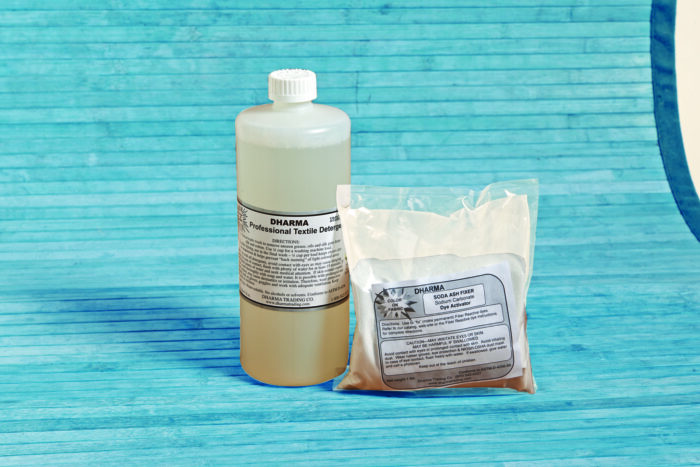
1. Scour the fabric.
For a washing machine load, use 1/8 cup of Synthrapol or Dharma Professional Textile Detergent and 1/4 cup of soda ash in hot water. Run for the entire wash cycle.
2. Soak the scoured fabric in a solution of warm water and soda ash.
Use a heaping 1/2 cup of soda ash per gallon of water. Let the fabric soak for at least one-half hour. Keep the soda-ash solution covered; it is mildly caustic and harmful to pets if swallowed. Save the solution in a covered paint bucket or other container for future use.
3. Wring out the fabric until it is damp.
No water should run from the fabric. If you intend to hand-dye a lot of fabric, we suggest investing in a manual crank wringer; it has saved us hours and many sore muscles.

Dye with ice
Use pure-hue or blended-color dye powders. We suggest using two to three different blended dye powders to achieve the most varied results. Wear gloves to protect your skin and a dust mask to prevent inhaling any airborne powder. Place a piece of 1⁄2-inch plastic fencing cut to size, or a plastic-coated wire shelf insert into the bottom of the plastic bin to elevate the fabric above the melt water.
1. Manipulate the damp fabric.
Crumple, pleat, fold, squish, tie, or roll the fabric until it fits into the bin. Lay the fabric atop the shelf insert at the bin’s bottom.

2. Cover the fabric with ice; don’t skimp.
No fabric should be visible through the ice. Use cubed or crushed ice; each gives a different result.

3. Apply dye powders to the ice.
Use a small strainer and a spoon or cake spatula to apply the dye powders. Hold the strainer over the ice, and scoop a spoonful of dye powder into the strainer. Tap the strainer’s edge with the spoon or spatula to sprinkle the dye onto the ice. If you are using three colors, you will probably use at least 3 teaspoons of dye. It’s better to add too much dye powder than too little for complete coverage and saturation.
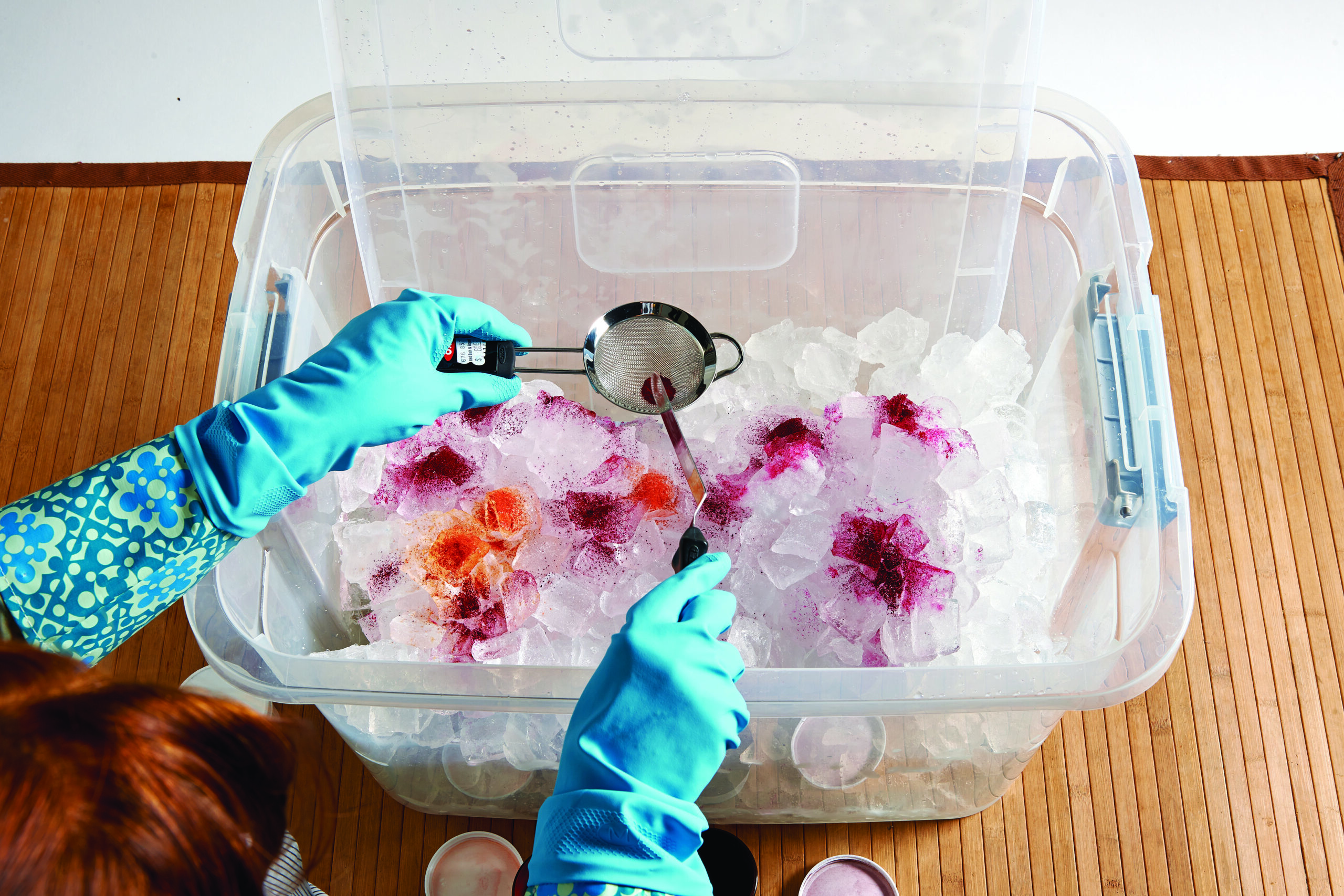
4. Allow the ice to melt.
Let the fabric sit until the ice is completely melted. This can take 12 hours or more. To speed up the process, place the bin of fabric and ice outside in the sun on a hot day or inside next to a heater if it is cold.
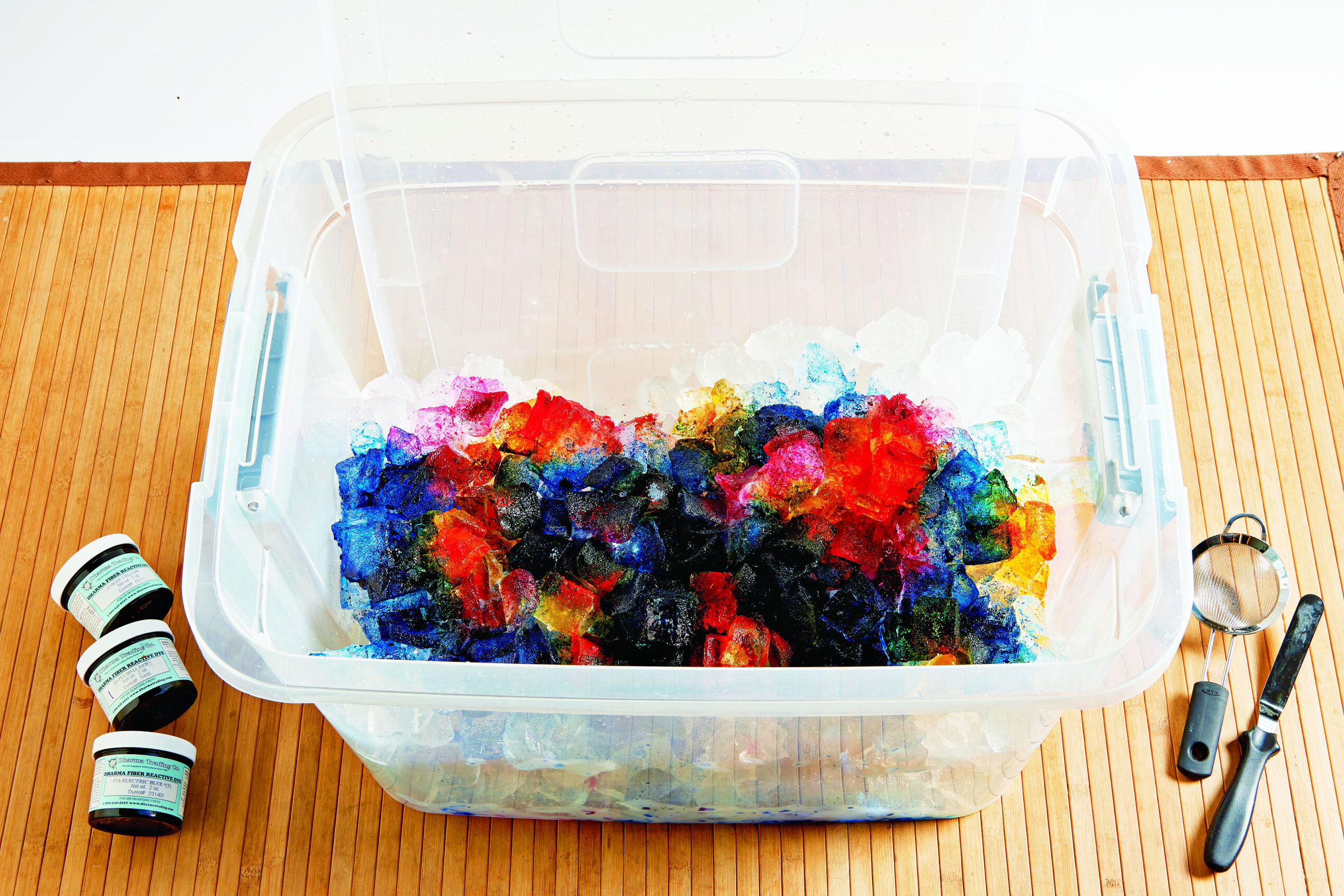
5. Remove the fabric from the bin.
Put on gloves, wring out the fabric, and then rinse it. Start with cold water, and gradually increase the temperature until the water is warm. Rinse the fabric two or three times, or until the rinse water runs almost clear; it will not be perfectly clear. Dump the excess dye water into a sink; it is slightly alkaline and won’t upset most septic systems.
6. Wash fabric three times in the washing machine.
Make sure it has room to move. Wash twice with Synthrapol or Dharma Professional Textile Detergent; use warm water for the first wash and hot water for the second wash. For the third wash, use only fabric softener—no detergent. Machine-dry the fabric and iron it. This is when you’ll see the final patterns in all their random beauty and true colors. Make notes for next time.
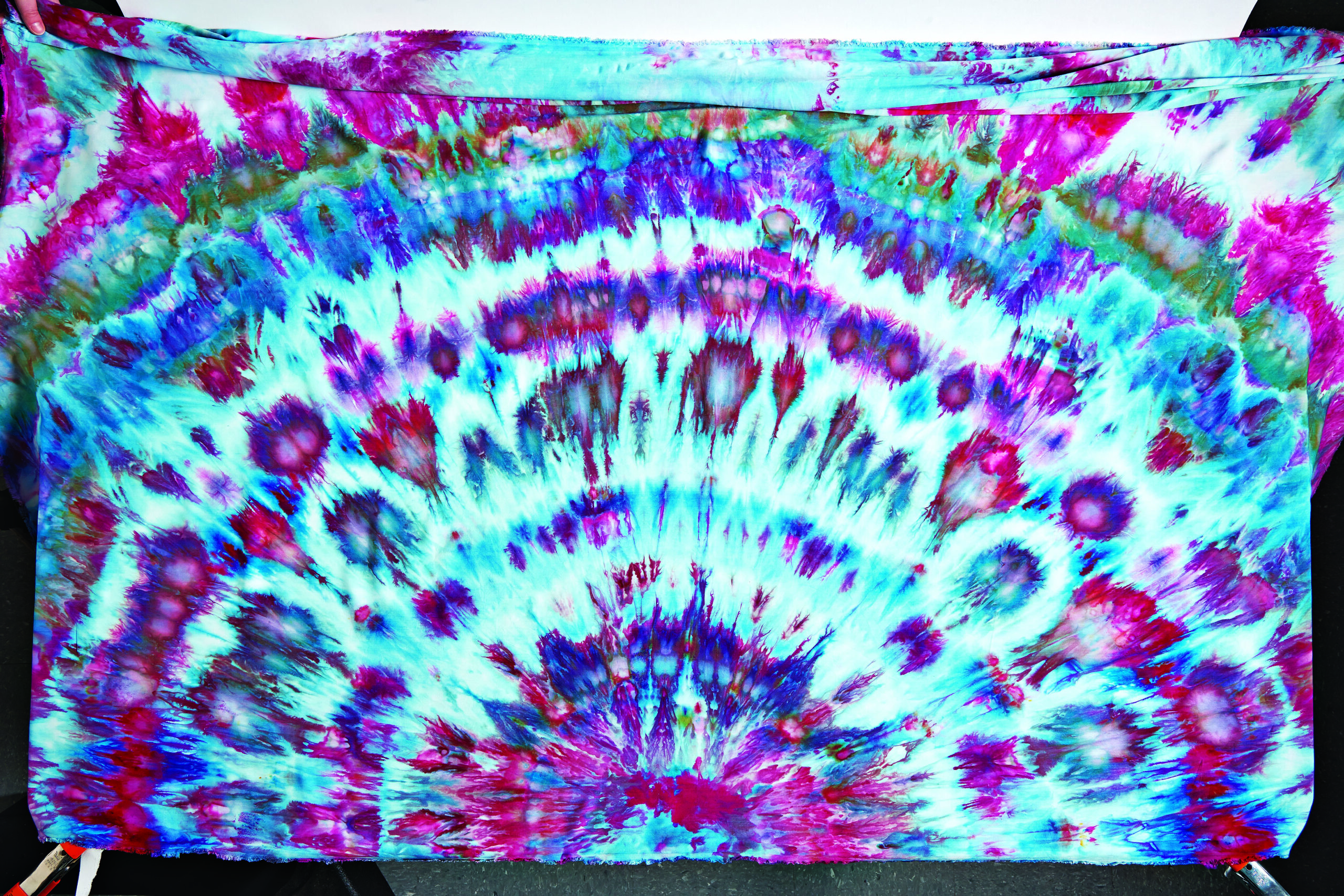
To see the authors’ suggested color combinations, Try These Color Combinations for Ice Dyeing.

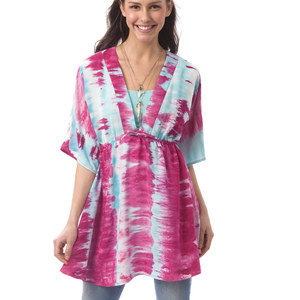
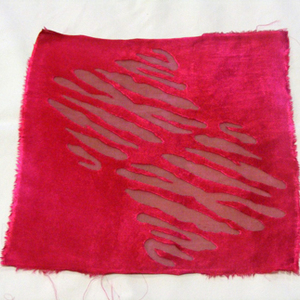
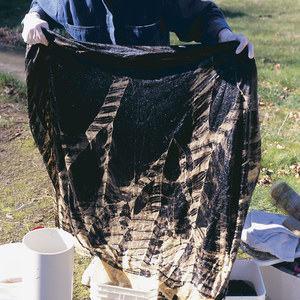
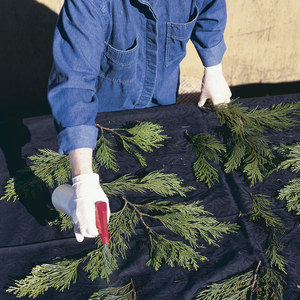

























Log in or create an account to post a comment.
Sign up Log in